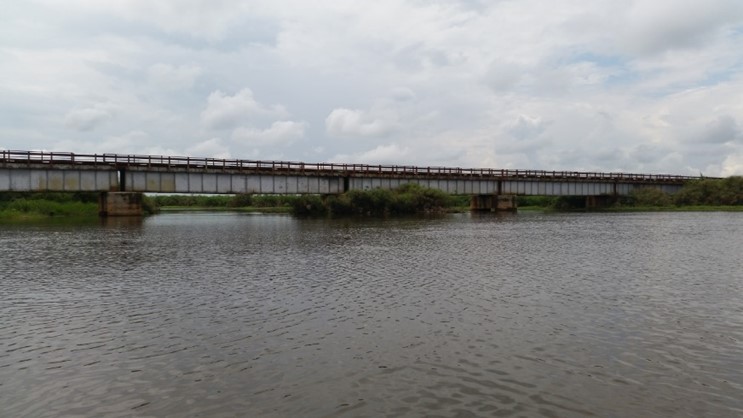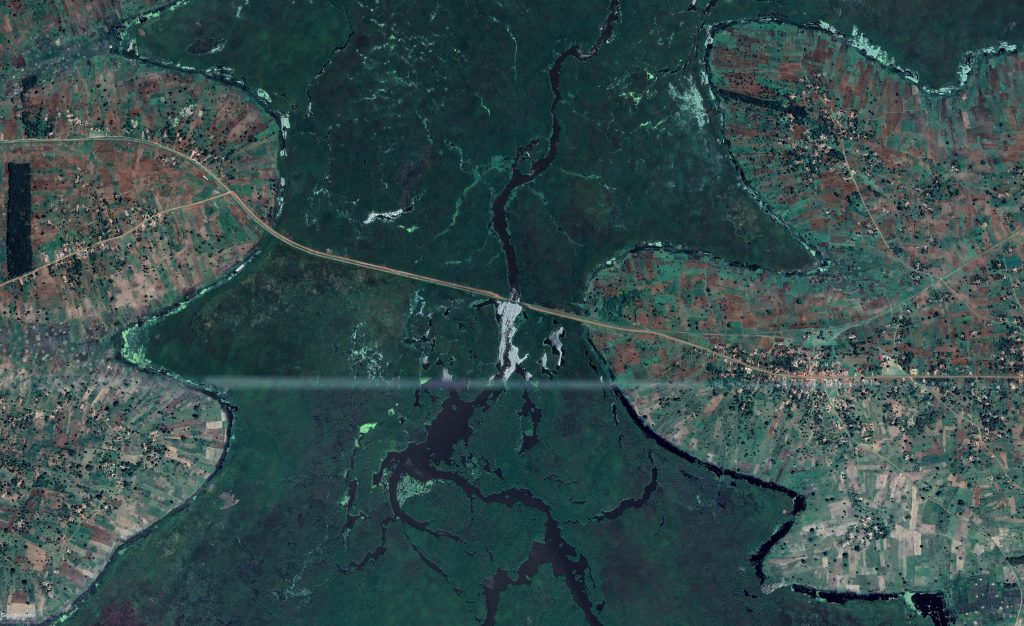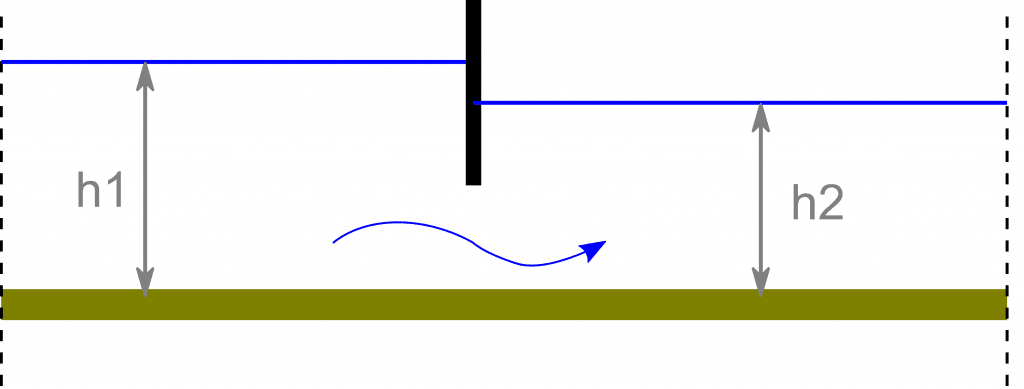A previous post on this blog discussed the Surface Velocity Radar (SVR). Mpologoma hydro-station in Uganda is a prime example of where this instrument could be particularly useful.
Mpologoma is a medium-size river that flows into Lake Kyoga. Stage and discharge are measured at the railway bridge in a large wetland area. It is the only location with good accessibility in the downstream river reach. The bridge provides a stable hydraulic control with concentrated flow.

However, Mpologoma at the bridge is subject to backwater effect from Lake Kyoga. Water level, therefore, is not a reliable indicator of flow velocity, and there is no direct relation between stage and discharge. This is illustrated by the graph of historic stage-discharge data points (right-hand page).

A rating curve is built on the premise that water level is a reliable indicator of flow area and flow velocity. The latter is not valid for Mpologoma.
Assessing flow velocity is complicated at this site. It can be achieved by measuring water levels up- and downstream of the bridge, and then applying a hydraulic formula. However, this approach is not practical since the difference in water level is small, specifically for low flows.


The SVR would be a practical solution for monitoring surface velocity on a continuous basis.
It requires that we establish the relation between surface velocity and the average velocity of the flow profile. This involves a set of high-quality ADCP measurements for the full range of flow velocities.
Environmental factors such as wind can influence surface velocity, and could therefore affect the accuracy of the measurement. This is unlikely at this site but needs to be checked. An anemometer (temporary) could measure wind intensity and direction.
A SVR solution has several advantages: it is a non-contact sensor that is easy to install without need for expensive civil works. Alternatives such as an acoustic doppler flow meter—e.g. the Sontek IQ—are much more expensive, and are difficult to install.
Lastly, note that the SVR is not a stand-alone solution. It is used together with an automatic water level recorder.
